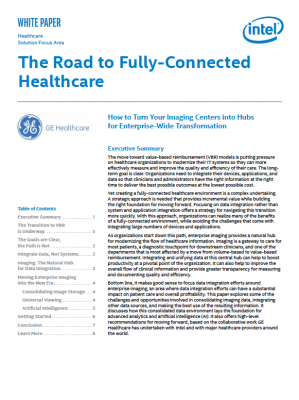
The move toward value-based reimbursement (VBR) models is putting pressure on healthcare organizations to modernize their IT systems so they can more effectively measure and improve the quality and efficiency of their care. The long-term goal is clear. Organizations need to integrate their devices, applications, and data so that clinicians and administrators have the right information at the right time to deliver the best possible outcomes at the lowest possible cost.
Yet creating a fully-connected healthcare environment is a complex undertaking. A strategic approach is needed that provides incremental value while building the right foundation for moving forward. Focusing on data integration rather than system and application integration offers a strategy for navigating this transition more quickly. With this approach, organizations can realize many of the benefits of a fully-connected environment, while avoiding the challenges that come with integrating large numbers of devices and applications.
As organizations start down this path, enterprise imaging provides a natural hub for modernizing the flow of healthcare information. Imaging is a gateway to care for most patients, a diagnostic touchpoint for downstream clinicians, and one of the departments that is most affected by a move from volume-based to value-based reimbursement. Integrating and unifying data at this central hub can help to boost productivity at a pivotal point of the organization. It can also help to improve the overall flow of clinical information and provide greater transparency for measuring and documenting quality and efficiency.
Bottom line, it makes good sense to focus data integration efforts around enterprise imaging, an area where data integration efforts can have a substantial impact on patient care and overall profitability. This paper explores some of the challenges and opportunities involved in consolidating imaging data, integrating other data sources, and making the best use of the resulting information. It discusses how this consolidated data environment lays the foundation for advanced analytics and artificial intelligence (AI). It also offers high-level recommendations for moving forward, based on the collaborative work GE Healthcare has undertaken with Intel and with major healthcare providers around the world.


 February 03, 2025
February 03, 2025 








